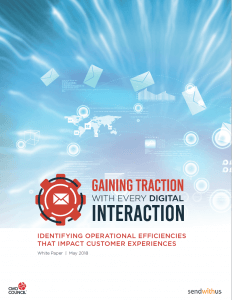 Despite a mandate to drive growth, chief marketers are still stuck in a decade-long rut that has yet to see them fully optimize the lifetime value of existing customers. In 2008, when asked if brands were fully realizing the revenue potential of customers, 76 percent said no. Ten years later, 77 percent of respondents to the same question in a new Chief Marketing Officer (CMO) Council audit still say no, and 10 percent say they are not even sure.
Despite a mandate to drive growth, chief marketers are still stuck in a decade-long rut that has yet to see them fully optimize the lifetime value of existing customers. In 2008, when asked if brands were fully realizing the revenue potential of customers, 76 percent said no. Ten years later, 77 percent of respondents to the same question in a new Chief Marketing Officer (CMO) Council audit still say no, and 10 percent say they are not even sure.
This is why you and your AEs need to understand the math of a lifetime customer. We talk about/teach this is all of our AE bootcamps (live and on-demand) and I’m always surprised at how few of the attendees have been exposed to the idea of calculating, monitoring and monetizing the lifetime value of a customer.
This failure to capitalize on customer revenue potential does not come as a surprise as the majority of marketers are missing an opportunity to leverage opt-in, triggered communications, including transactional email, to further relationships with customers. According to the latest study by the CMO Council and communication management platform Sendwithus, just 36 percent of respondents are leveraging transactional emails as an opportunity to further the value of relationships. While 30 percent believe they are engaging through triggered emails, it is only to reaffirm or acknowledge a past transaction, not to intentionally develop a more meaningful customer relationship. This occurs despite 94 percent of respondents’ belief that delivery of personalized communications across all customer touchpoints is critical to achieving profitable customer experiences.
The new report, titled “Gaining Traction With Every Digital Interaction,” reveals that collaboration around the channels of choice for the customer is critical to turning an automated touchpoint into a revenue-producing opportunity. According to 34 percent of marketers, transactional emails are not leveraged as a relationship and revenue driver because they are created outside of marketing, with little opportunity to collaborate or align across functional areas.
Following the inability to collaborate and align as a roadblock to success, meetings and manual processes emerge as additional gaps between the growth strategy and real-time delivery. When asked to detail the state of collaboration across key stakeholders in customer experience, 29 percent of marketers reveal that collaboration comes in the form of meetings to align on strategies and timelines while 26 percent say that collaboration is left to team leaders who collect input and feedback as needed.
Marketers plan to realize revenue through key strategies to optimize profitable relationships. Among the top strategies are personalizing communications across all touchpoints (64 percent) and identifying new ways to improve upsell and cross-sell opportunities for existing customers (64 percent). Marketers will also commit to continuous cycles of testing with the specific goal of improving individual communications to create more contextual and relevant experiences while 26 percent have committed to better leveraging opt-in communications like transactional emails.
The report is based on research conducted by the CMO Council though an online audit, which collected insights from 179 senior marketing leaders in the early months of 2018. Some 43 percent of respondents represent organizations with revenues more than $500 million USD per year, with 38 percent holding titles of CMO, senior vice president of marketing or head of marketing.
The 25-page white paper also includes an investigation into how only 13 percent of marketers feel they are fully exploiting customer revenue opportunity strategies and engaging differently, including how these leaders are driving deeper relationships, collaborating across stakeholders and leveraging data to uncover new opportunities and options for engagement. To download the complimentary strategic brief, click here.





